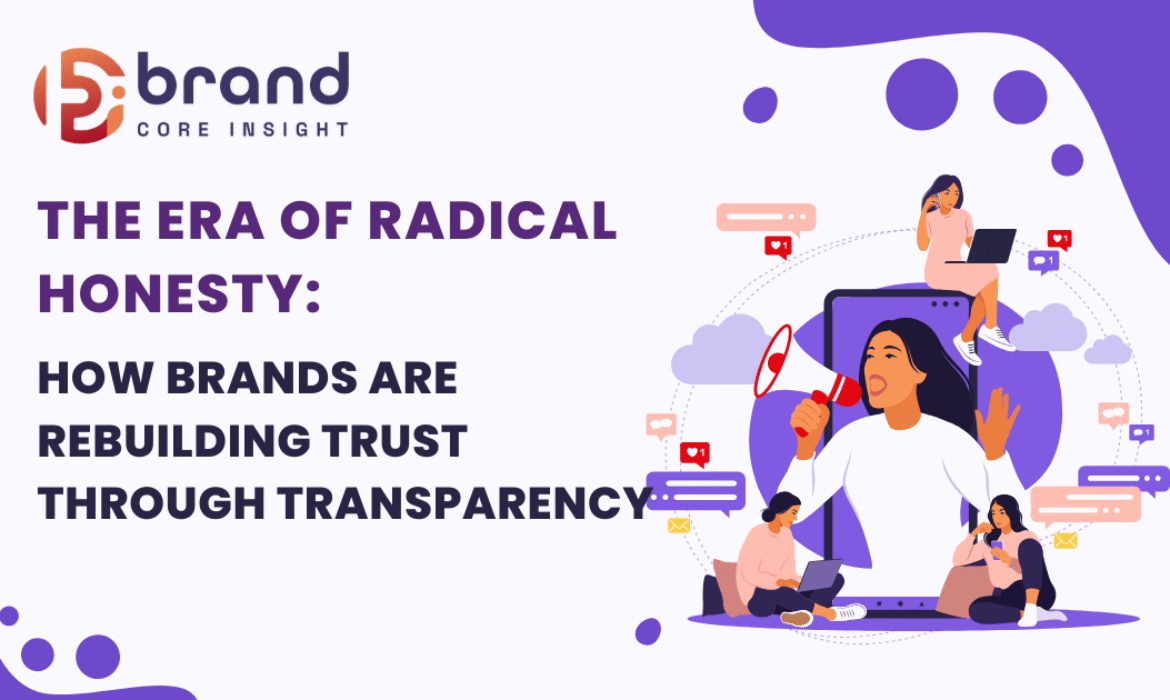In the rapidly evolving world of digital marketing, one thing has become abundantly clear: consumers value transparency. The era of corporate gloss, half-truths, and heavily curated public images is slowly fading away. Enter “radical honesty” — a fresh approach where brands choose to be completely open, honest, and vulnerable with their audiences. In a time where trust is a precious commodity, radical honesty is quickly becoming the go-to strategy for brands looking to rebuild their reputation and foster deeper relationships with consumers.
In this blog, we’ll explore how transparency is revolutionizing the way businesses operate and how digital marketing, powered by SEO, is playing a crucial role in this shift.
The Shift Toward Transparency in the Digital Age
For years, businesses have worked hard to craft polished, perfect images for their brands. Marketing campaigns were carefully designed to project an ideal version of a company’s values, products, and services. However, in today’s age of digital marketing, where information flows freely and reviews are just a click away, this strategy no longer works. Consumers want more than just a shiny exterior — they want authenticity.
According to a 2023 report by the Edelman Trust Barometer, 81% of consumers say they need to trust the brand before making a purchase. Trust is now a foundational element of successful digital marketing, and transparency is the cornerstone of trust.
This trend has given rise to the idea of radical honesty, a practice where brands openly share both their strengths and shortcomings. This doesn’t just mean admitting mistakes — it’s about being transparent about everything from sourcing and labor practices to data collection and advertising strategies.
Why Radical Honesty Matters in Digital Marketing
As brands battle for consumer attention in an overcrowded marketplace, transparency can be the deciding factor between success and failure. Here’s why it matters:
- Building Consumer Trust: When a brand is transparent, consumers feel more secure in their purchasing decisions. They know what to expect, and they feel confident in the company’s integrity. This builds trust, which is crucial in an era where skepticism is high.
- Engagement and Loyalty: Transparency in marketing helps humanize brands. Consumers appreciate when brands are open about their values, goals, and even their mistakes. This openness fosters deeper emotional connections, driving consumer engagement and long-term loyalty.
- Mitigating Public Relations Crises: In the past, brands often tried to cover up mistakes or scandals. Today, with social media and digital platforms, covering up a problem can make things worse. Radical honesty provides a proactive approach to addressing issues before they escalate into larger crises.
- SEO Benefits: The rise of transparency is also closely tied to the world of SEO. Honest, transparent content often resonates more with users and is naturally more shareable. When brands speak from the heart, they create content that encourages engagement, builds backlinks, and improves search rankings.
How Brands Are Embracing Radical Honesty
Brands that have adopted radical honesty are seeing positive results in their digital marketing efforts. Let’s look at some examples of companies that are leading the way:
- Patagonia: Known for its commitment to environmental sustainability, Patagonia has long been a pioneer in radical honesty. The brand openly shares information about its manufacturing processes, sourcing, and environmental impact. For example, in its advertising campaigns, the company has used slogans like, “Don’t Buy This Jacket,” urging consumers to consider their environmental footprint before making a purchase. This authenticity has helped Patagonia build a strong, loyal customer base that values the company’s transparency.
- Everlane: Everlane, a fashion brand, has taken transparency to the next level by publishing detailed “Radical Transparency” reports on their website. These reports break down the costs of production, labor, and materials for each of their products. Everlane has not only been transparent about its pricing but also about the challenges of maintaining sustainable production practices.
- Warby Parker: The eyewear brand has made transparency a core component of its identity. From disclosing how their products are made to explaining the impact of their “Buy a Pair, Give a Pair” program, Warby Parker has built trust through honest, clear communication. This level of transparency has helped the brand stand out in a crowded market and grow its loyal following.
- Ben & Jerry’s: Known for its activism and commitment to social justice, Ben & Jerry’s uses transparency to maintain its values in the eyes of its customers. The brand shares its stance on various political and social issues openly, even if it means alienating some customers. By sticking to its principles, Ben & Jerry’s has cultivated a strong, passionate following.
The Role of SEO in Building Trust Through Transparency
Search engine optimization (SEO) and radical honesty may seem unrelated at first glance, but they are inextricably linked. Let’s break down how SEO can amplify a brand’s transparent efforts.
- Authentic Content: Search engines like Google reward content that is well-written, informative, and transparent. When brands share their journey — including the good, the bad, and the ugly — they create richer, more authentic content that resonates with both consumers and search engines. Content that answers questions, provides value, and is truthful tends to perform better in search results.
- User Experience (UX): Transparency often leads to a better user experience. When a website clearly explains a product or service, how it works, and the company’s mission, users are more likely to trust the site and stay longer. This leads to lower bounce rates and higher engagement, which in turn improves SEO rankings.
- Reviews and Testimonials: As part of radical honesty, many brands encourage customers to leave honest reviews — both positive and negative. Honest reviews are more likely to be trusted by consumers, and search engines favor real user feedback. Encouraging and responding to reviews not only boosts credibility but also enhances SEO efforts.
- Backlink Opportunities: Transparent brands are more likely to be mentioned in reputable news outlets, blogs, and industry publications. When a brand is known for being open and transparent, it becomes a valuable resource for others, leading to natural backlink generation — a crucial SEO factor.
Challenges and Risks of Radical Honesty
While radical honesty has its benefits, it’s not without its risks. Transparency can backfire if not handled carefully. Here are some potential challenges:
- Over-Transparency: Sharing too much can overwhelm consumers. Brands need to strike the right balance between being open and maintaining focus on what matters to their audience.
- Negative Feedback: When a brand admits its flaws, it opens the door for negative feedback. While transparency is vital, businesses need to be prepared to handle criticism and respond appropriately.
- Loss of Control: Transparency means relinquishing some control over the narrative. Brands must be ready to manage the consequences of their openness, especially in the age of social media.
Conclusion: Embracing the Future of Transparency
The era of radical honesty is here, and brands that embrace it will reap the rewards. Transparency is not just about sharing what a brand does well; it’s about owning up to mistakes and creating authentic connections with customers. In an age where digital marketing and SEO are more important than ever, brands that prioritize trust and openness will not only build stronger relationships but also gain higher visibility and engagement.
As consumers demand more honesty and integrity from the companies they support, brands must adapt or risk falling behind. Radical honesty isn’t just a trend — it’s the future of successful digital marketing.






